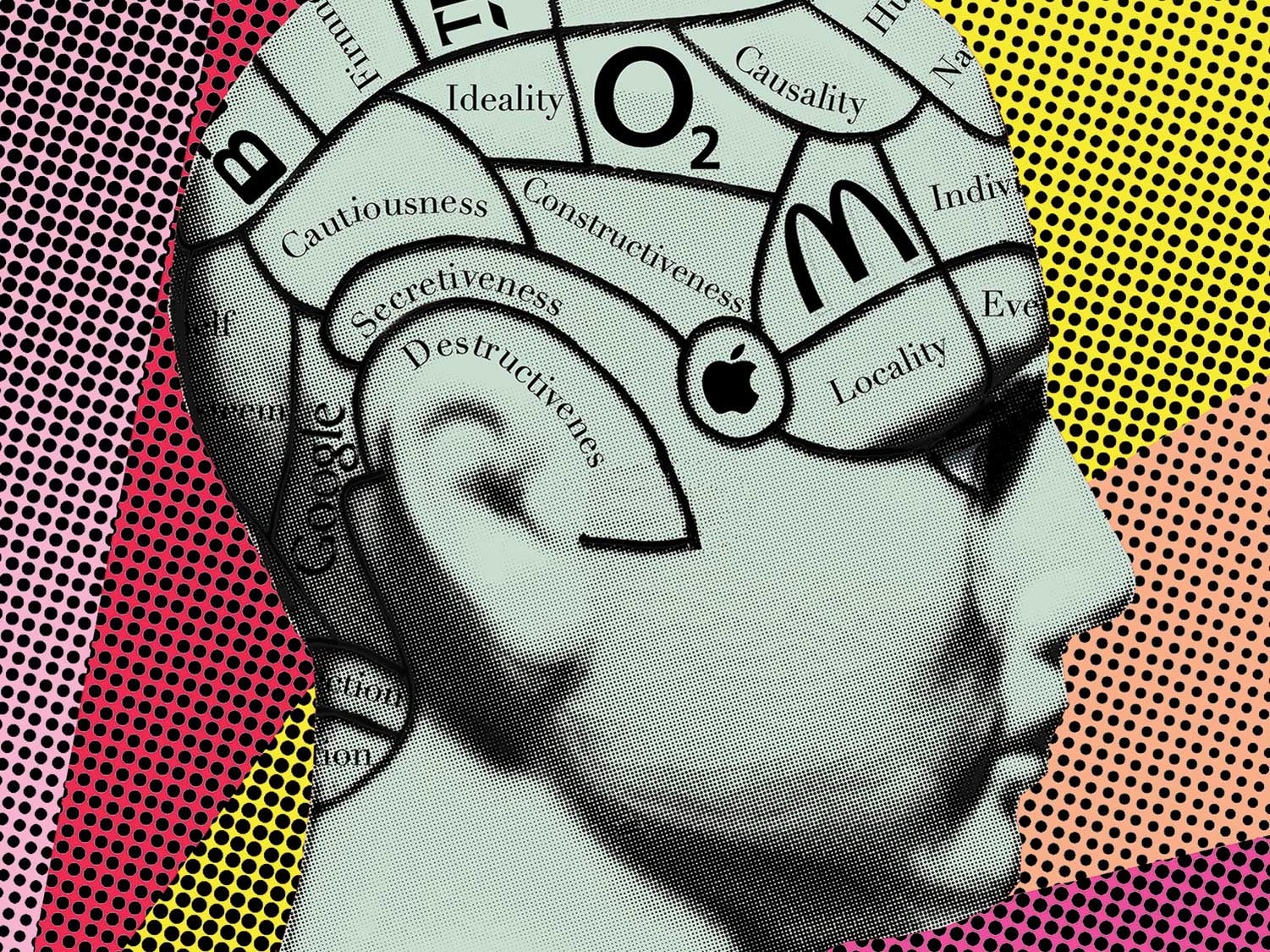The neuroadvertising paradox
Advertisers are discovering that the secret of emotional memory lies in culture and language, not in brain scan data.

Advances in neuroscience are being adopted by marketing and advertising industries keen to show the efficacy of their communication in an era of falling budgets. Companies such as the Boston-based Innerscope have developed a cheap and effective way of monitoring part of the brain’s response to media. From this data, they create ‘Engagement maps – moment by moment analysis of the audience’s emotional response to the media stimuli.’ Welcome to neuromarketing, where brands and marketers push the frontier of consciousness in search of an answer that perennial question: do you like me?
”Emotions are our quick decision makers,” explains Gareth Ellis, senior planner at Saatchi and Saatchi. “On the most basic level, emotions instruct our instinct: Fight or flight. We have a saying here, ‘Reason leads to conclusion but emotion leads to action.’”
Saatchi and Saatchi have developed their own language of love, specifically the terminology of ‘lovemarks’: brands that don’t just inspire admiration, but ‘Loyalty Beyond Reason’. ‘Lovemarks reach your heart as well as your mind,’ explains the official website, ‘creating an intimate, emotional connection that you just can’t live without. Ever.’ But how do you create that emotional connection? Opinion is divided. While some are attracted to neuromarketing’s promise of monitoring the emotional responses of an individual’s brain, other experts feel that the answer to emotional engagement lies in the culture, in the domain of signs and symbols known as semiotic analysis. Many brand managers will engage a grab bag of these feuding experts and pick and mix from their advice. The various sects and dogmas of Marketing are treated expediently by their clients though: they just want an approach that works.
Gareth Ellis was the planner behind T-Mobile’s advert ‘Dance’, which saw an outbreak of choreographed joy in Liverpool Street Station in January 2009. ‘Dance’ won a Golden Lion at the Cannes 56th International Advertising Festival in recognition of its impact as a pop culture phenomenon (13 million views on YouTube and counting). Launched against a backdrop of a wintry recession, but with the tailwind of hope blowing in from Barack Obama’s imminent inauguration, its communal dancing in the grim, banal surroundings of Liverpool Street Station was a celebration of the human spirit, an outbreak of pure positive emotion.

The most prominent adverts of the age seem to swerve around the rational to light up an emotional response. Chocolate is equated with sex in advertising, specifically female masturbation. The famous Cadbury’s Gorilla, made by top creative house Fallon, took an unsung toiler, a drummer, combined it with the physical discomfort of a gorilla suit, and gave them their moment in the sun. On an unconscious level, the gorilla’s drum solo was a moment of solitary orgasm. The gorilla suit is the body horror that regular female consumers of chocolate feel. And the drummer is the person at the back who does all the work – a position that resonates with a target audience weighed down by thankless domestic chores. That’s my back-of-the-envelope interpretation, none of which diminished the pure joy the advert aroused in viewers
On a rational level, the advert seemed incongruous – on an emotional level, we understood it. Think also of Sony Bravia’s coloured balls pouring down the hills of San Francisco – a refined visual expression of giddiness with only the subtlest appeal to the rational (the balls enact the promise of the television’s vivid detailed colours). Music also plays a prominent role in these three adverts, from Phil Collins’ ‘In The Air Tonight’ to Jose Gonzalez’s ‘Heartbeats’, for its power to unconsciously influence feeling.
On June 8 2009, Andre Marquis Senior Vice President of Sales and Marketing at Innerscope, a three-year-old biometrics research company, gave a lecture at Google. Here he presented his company’s methods and their belief in the crucial role of our primitive emotional responses in the choices we make, citing obesity as an example of how “our cognitive mind has a minimum effect upon our decision making”. “Neuroscience has figured out that emotions are what drives us,” he continued. “Everything we do is filtered by our emotions first. What you see and what you experience is influenced by what you are feeling on a second-by-second basis.”
At Innerscope, viewers wearing light wireless biometric vests are shown adverts in a ‘clutter reel’; that is, the advert is surrounded by trailers and film clips to reflect the way we encounter advertising within a stream of other culture. These biometric vests are a shift away from the use of functioning magnetic resonance image scanners (fMRI) – the big white doughnuts into which subjects are slowly immersed – or the older electroencephelogram (EEG), a collection of scalp sensors that pick up activity in the various lobes of the upper cortex, both of which have been and still are used in other practises of neuromarketing. The vests are cheaper and less claustrophobic than a fMRI, and unlike an EEG, they focus upon the emotional limbic system.
The emotional limbic system, sometimes referred to as the ‘lizard brain’, evolved to ensure our survival. Emotions influence what we pay attention to and what we remember. ‘The emotions are mechanisms that set the brain’s highest-level goals,’ writes Steven Pinker, author of How the Mind Works. Emotions make decisions. In the Romanic view of the brain, reason and emotion are separate – like Kirk and Spock. Pinker demonstrates that there is no line between thinking and feeling: cognition and emotion function simultaneously and in tandem. Without fear, how would Spock have realised that defending himself against a Klingon was more important than playing a round of Vulcan chess? In the limbic system, the amygdala is the specific nuclei responsible for processing and storing the memory of emotional reactions. It is an almond-shaped organ buried in each temporal lobe that fires signals to the whole brain. Experiments have shown that the injection of chemicals into the amygdala of rats influence their ability to recall tasks or indeed to forget them.
Innerscope partnered with the global research group OTX to bring their biometric methods to the UK. “The OTX scale has two axis – one is emotion and the other is cognitive. And ‘Dance’ was off the scale,” explains Gareth Ellis. “Some people take the view that advertising in the UK needs to be either incredibly emotional or incredibly rational – so either Cadburys Gorilla and Andrex Puppy, or a hard sell of the message, like Direct Line.”
(Direct Line recently resurrected the motif of their renowned 1980s adverts, a red phone on wheels that repeatedly beeps a chirpy signature jingle. In a recession, the insurance advertiser’s love of repetition is apparent to anyone unfortunate enough to watch daytime television; this mimetic sub-genre attained beery genius with the ‘Compare the Meerkat’ campaign for the car insurance website Comparethemarket.com, which relies on the brain’s stubborn response to error to keep it at the forefront of your perception).

Greg Rowland, expert in brand semiotics and the founder of Greg Rowland Semiotics, suggests that the emotion vs. rational thought split is often a false dichotomy. “Emotion that isn’t tethered to a product reality can easily float away into pure entertainment, with no tangible benefit for the brand. There is no such thing as pure rationality in advertising – unless perhaps one day a laundry advert displays the chemical compounds for their detergent and nothing else. There is nothing that is entirely emotional or rational. ‘Emotional’ can mean ‘does this create a guiding set of metaphors that connect with culture and engaging symbolism?’ Rational can mean ‘does this suggest something useful I can use in life?’ But ultimately, they are just convenient abstractions.”
For marketeers, emotion is their weapon on the battleground of memory. As you walk through the supermarket, processing the thousands of possible choices, in a state of consumer flux between habit and potential experimentation, which products you select could be determined by your emotional memory. Advertising and marketing is about changing habitual behaviour. That is why younger audiences are so valuable to marketers: catch young minds prior to imprinting with brand habits. The further along the timeline of habit a consumer is, the more expensive it becomes to convince them to change. The amygdala’s role in emotional response and learning makes it seem like the sweetspot in changing habit. Although it works in tandem with the higher cortex, the bulk of its work is unconscious.
“Neurobiologists and cognitive psychologists contend that the unconscious mind controls as much as 95% of human behaviour,” writes Dr. Neale Martin in his book Habit: The 95% of Behaviour Marketers Ignore. Martin advances a dual mind theory and insists that for too long marketers have been aiming their messages at the wrong mind. Martin moots two distinct types of mental processing: the executive mind, where conscious cognition occurs, and the habitual mind, which regulates the body, and stores our responses to previously learned behaviours. “If the purchase enters conscious awareness, the realm of the executive mind, it is quite likely that your customer will re-evaluate your offering as well as your competitors.” Better that our consumption of brands remains on the unconscious level of habit.
The underlying trend to these commercial applications of neuroscience is to circumvent the thinking mind. You don’t need a wireless biometric jacket to know that if marketing is to be influential, it needs to tap into an audience’s feelings. But neuromarketing’s promise of more accurate evaluation of the very part of the brain responsible for setting and acting upon goals is particularly alluring.
Greg Rowland is not impressed. Semiotic analysis of brands comes at the matter from a humanities perspective. Spend ten minutes with this brand semiotician and you will feel like you have met the puppet master.
“Neuromarketing presupposes the human being to be a self-sufficient and self-contained consciousness,” explains Rowland, “and that is not how culture and response works. In the world of cultural theory, we are empty vessels through which identity and symbols pour. So when you dig further into the brain, you are still pursuing the idea that somewhere within the deepest recesses of the brain lies the answer to engaging with a mass audience. I am sure that in ten years time, we will send nanobots out to bring back the chemicals from individual nodes of the brain so that we can gauge the response to an ad. But digging deeper and deeper is the wrong principle.”
By comparison to the scientific promise of neuromarketing, semiotic analysis may seem rarefied. “But it can lead to effective insight,” says Rowland, “and creative inspiration rather than simple evaluation.”
It was Rowland’s semiotic observation that Pot Noodle is to real food what pornography is to sex that inspired the famous Pot Noodle “Slag of all snacks” positioning. He uses the example of his recent work with Rexona (Sure) deodorant in Russia to explain the shortcomings of evaluative methods such as neuromarketing:
“The idea was to adopt the strong tone of a Putin in the advertising. To create a 1960s strong-arm paranoia around body odour. [Advertising agency] Lowe’s execution of this idea showed a tattooed pig living in a smelly woman’s armpit. A lot of women were deeply offended. If the ad had been tested by neuromarketeers, it would never have gone ahead. The biometrics would have shown utter disgust. But the ad was highly effective in actually persuading Russians to buy Rexona, and has been used as a template in other countries – although pigs were swapped for goats in Indonesia, for understandable reasons.”
Neuroscientific insight into the role of emotions in decision-making is informing the creative work of advertisers and marketers. The most acclaimed adverts of our times have combined music and feeling with a lateral appeal to the unconscious. Yet its main application as another way of evaluating creative concepts only further emphasises how distrustful corporate culture has become of the creative. It is safer to biometrically wire up twenty people to tell you which trailer to promote your film, rather than to trust to your own instinct. Yet it is creative instinct and insight that make adverts like ‘Dance’. ‘Dance’ was filmed and edited in a day before being broadcast. There was no time to test it.
Neuromarketing is a focus group of the emotions set up to evaluate an existing idea. Perhaps if marketers and advertisers invested more in the creation of interesting and entertaining ideas, and less on measuring them, they would make more effective adverts. Put simply, they are overthinking. They need to feel it.
Additional art by William Davis

Share
Tweet this Share on Facebook